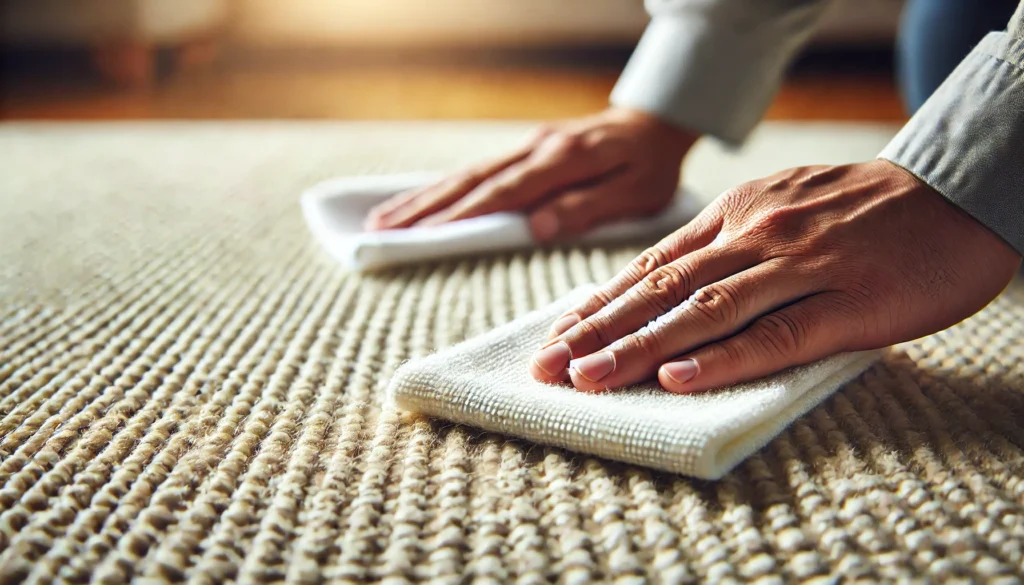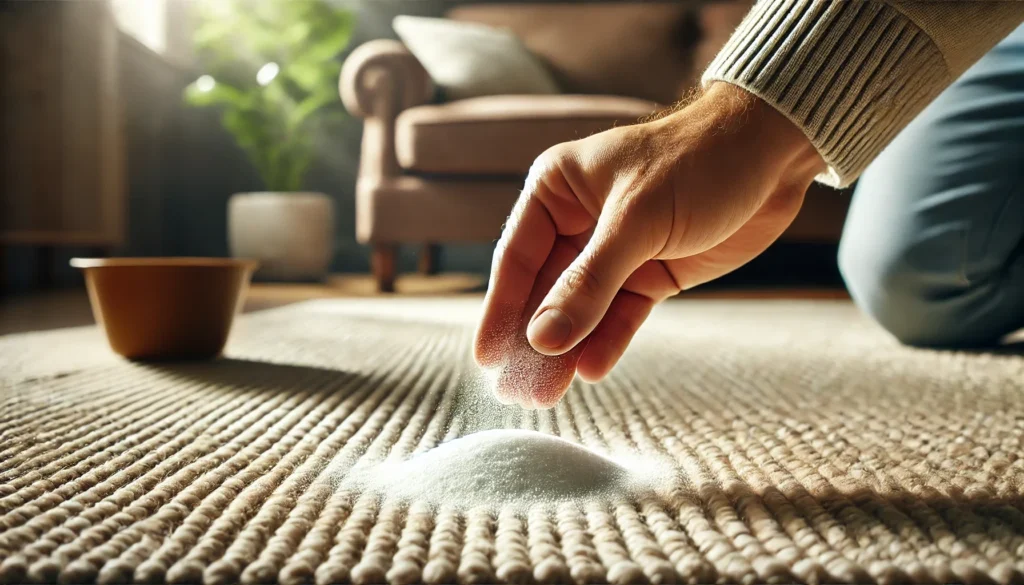
Rugs are the unsung heroes of interior decor, bringing warmth, comfort, and style to any room. However, they’re also magnets for dust, dirt, and the occasional spill, which can dull their beauty over time. Knowing how to clean a rug properly can keep it looking fresh, extend its life, and improve your home’s overall cleanliness. Plus, with some simple, effective cleaning techniques, you can make your rug look like new without calling in professionals every time.
This guide will walk you through the step-by-step process of cleaning a rug, from assessing the type of rug to choosing the right cleaning method. You’ll learn practical tips for removing stains, dealing with odors, and making your rug look fresh without damaging its fibers. Let’s dive into the ultimate rug-cleaning guide!
Step-by-Step Instructions
Step 1: Assess the Type of Rug You Have
Not all rugs are created equal. Some can be tossed in the washer, while others need gentler, specialized treatment. Before starting the cleaning process, it’s essential to identify your rug’s material and type.
- Common Rug Materials:
- Wool: Soft, durable, and naturally stain-resistant, but sensitive to water.
- Synthetic (Nylon, Polyester): Stain-resistant and durable, suitable for high-traffic areas.
- Cotton: Easy to clean but can shrink if washed improperly.
- Jute and Sisal: Natural fiber rugs that don’t handle water well; they’re prone to damage if too wet.
- Silk or Viscose: Delicate and best left to professionals for deep cleaning.
- Check the Care Label:
- Most rugs come with a care label that provides washing instructions. Look for symbols indicating if the rug is machine-washable, dry-clean only, or safe for water-based cleaning.
- Test for Colorfastness:
- Dampen a small area of the rug with a cloth and check if any dye transfers. If color fades or transfers, stick to dry cleaning methods or consult a professional.
Step 2: Prepare Your Cleaning Supplies
For most rug-cleaning tasks, these supplies will be essential:
- Vacuum Cleaner: A vacuum with brush settings for deep cleaning and suction for delicate areas.
- Mild Detergent or Rug Shampoo: Designed for your rug’s material. Avoid bleach-based detergents.
- Bucket of Warm Water: Not hot, as it may damage fibers.
- Soft-Bristle Brush or Sponge: Ideal for scrubbing dirt without damaging the rug.
- White Vinegar: Excellent for removing odors and disinfecting naturally.
- Baking Soda: Effective for deodorizing and loosening dirt.
- Towels: Use microfiber or absorbent towels for blotting excess water.
Step 3: Vacuum Thoroughly
Before you apply any cleaner, vacuum the rug on both sides. This step removes loose dirt, dust, and pet hair, making it easier to achieve a deep clean.
- Top Side: Use the vacuum’s brush attachment to reach deep into the fibers.
- Underside: Turn the rug over and vacuum the back to remove any dirt trapped in the base.
- Edges and Fringes: Switch to a gentle setting to avoid snagging fringe edges. Brush the fringes out with a soft brush instead of vacuuming them.

Step 4: Spot Clean Stains
Identifying and treating stains promptly can prevent permanent marks.
- Blot, Don’t Rub: Blot spills with a clean towel to lift liquid without spreading it further.
- Apply Mild Detergent: Mix a few drops of mild detergent with water, apply it to a sponge, and dab the stain.
- Rinse and Blot: Use a damp cloth to rinse the spot, then blot dry with a towel.
- Specific Stains:
- Pet Stains: Mix equal parts water and white vinegar, spray on the stain, and blot.
- Wine and Coffee Stains: Apply diluted dish soap, then blot with cold water.
- Grease Stains: Sprinkle baking soda on the stain, let it sit, then vacuum.

Step 5: Wash the Rug with Shampoo or Soap Solution
This step is ideal for synthetic, cotton, and some wool rugs. If your rug can handle water-based cleaning:
- Prepare the Soap Solution: Mix a small amount of rug shampoo with warm water in a bucket.
- Apply Solution to the Rug: Dip a sponge or brush into the solution, and gently scrub the rug in sections.
- Rinse with Clean Water: Dampen a cloth with clean water, wipe down each section to remove soap residue.
- Blot Excess Water: Use a dry towel to absorb as much water as possible.
- Air Dry the Rug: Hang the rug outside or over a railing, allowing it to air dry fully. Avoid direct sunlight for delicate materials.
Step 6: Use Baking Soda for Deodorizing
For a simple, effective deodorizing treatment:
- Sprinkle Baking Soda: Liberally sprinkle baking soda over the rug’s surface.
- Let Sit: Allow the baking soda to sit for at least 15 minutes (or overnight for deeper odors).
- Vacuum Thoroughly: Vacuum up the baking soda, along with any trapped odors.

Step 7: Clean Fringes and Edges
Fringes are delicate and need gentle care.
- Dust Fringes: Shake out loose dust from the fringes, or gently vacuum with a low setting.
- Spot Clean with Mild Detergent: Dab a sponge with diluted detergent on fringes, then rinse with clean water.
- Dry Fringes Carefully: Let them air dry fully before putting the rug back in place.
Step 8: Perform a Final Vacuum
After your rug is fully dried and deodorized, vacuum it once more. This final step ensures any lingering debris is removed and revives the rug’s fibers, making it look as good as new.
Read More: How to Clean an Area Rug on a Hardwood Floor
Troubleshooting and Tips
Even with careful cleaning, some issues might arise. Here are tips for overcoming common rug-cleaning challenges:
- Stubborn Stains Won’t Come Out: Try a vinegar and baking soda paste for tough spots. If the stain persists, consult a professional.
- Rug Smells Musty After Cleaning: Sprinkle more baking soda and let it sit for longer. Alternatively, hang the rug outside on a sunny, dry day to air it out.
- Edges Curl After Washing: Dampen the curled edges slightly and weigh them down with heavy books until dry.
- Rug Color Fades: This often happens with direct sunlight. Place rugs in shaded areas indoors, especially after cleaning.
Conclusion
Cleaning a rug doesn’t have to be daunting. With these step-by-step instructions, you now have the knowledge to tackle common spills, stains, and odors like a pro. By following this guide, you’ll help your rug stay in top shape, looking and feeling fresh for years to come.
Ready to put your new skills to the test? Start your cleaning project today and enjoy a brighter, cleaner home! For more tips on home care and maintenance, explore our other guides to keep your spaces sparkling.
FAQs about How to Clean Rug
1. How often should I clean my rug?
Vacuum weekly to keep dirt from settling. Deep cleaning is ideal every 6-12 months, depending on foot traffic and material type.
2. Can I clean a wool rug with water?
Wool rugs are sensitive to excessive water. Use minimal moisture and always blot dry. For thorough cleaning, consider professional services.
3. How do I remove pet odors from my rug?
Apply a mixture of white vinegar and water, or sprinkle baking soda. Both help neutralize odors effectively.
4. Is steam cleaning safe for all rugs?
No, steam cleaning can damage delicate rugs like silk or jute. For synthetic or sturdy materials, steam cleaning can be effective.
5. Should I clean a rug in direct sunlight?
Avoid direct sunlight, especially for darker colors, as it can fade the fibers. Air drying in shade is generally safer.
